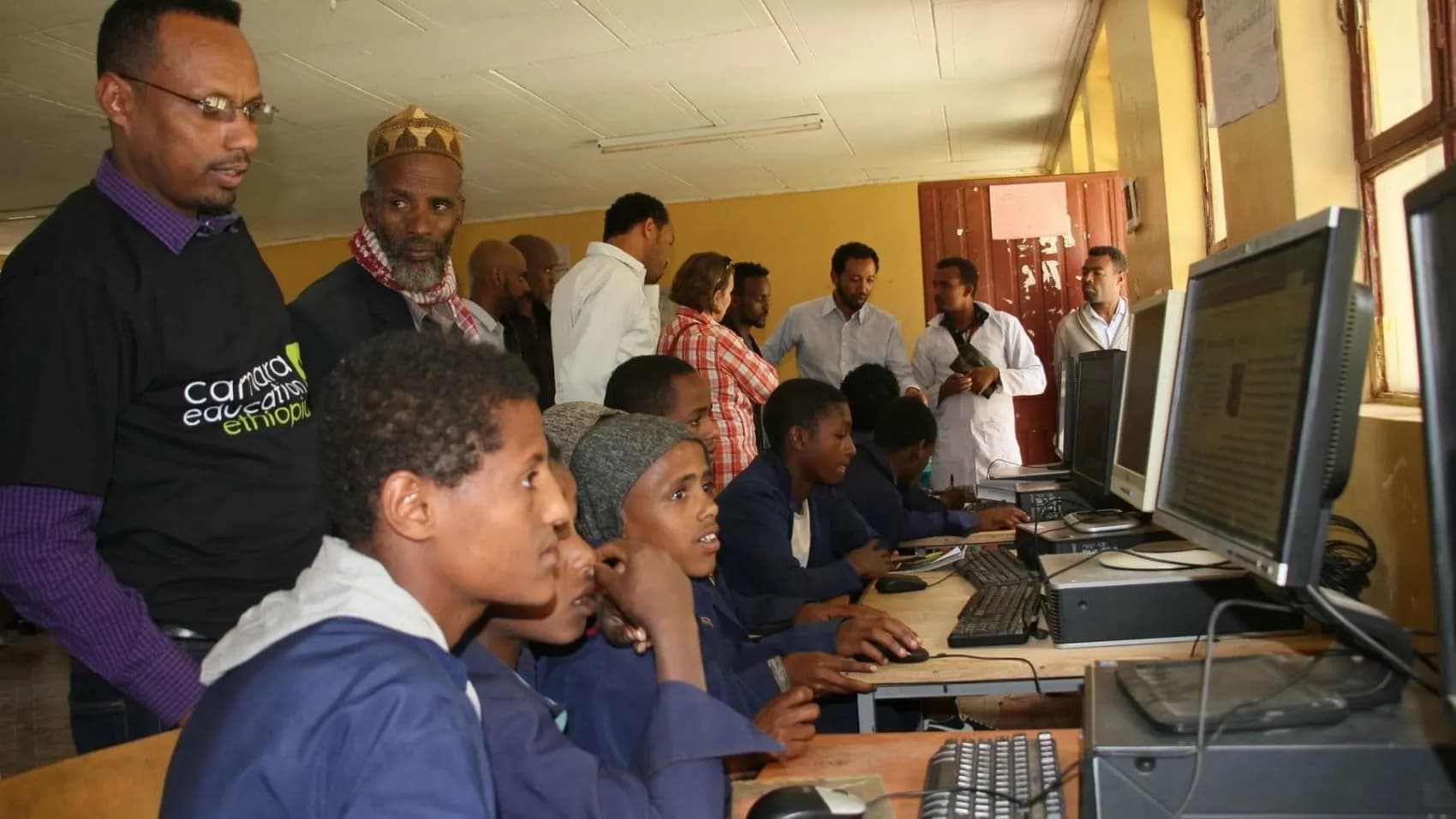Progress for 0 ad
Progress for 1 ad
Progress for 2 ad
Progress for 3 ad

Partner Content
Addis Ababa, Ethiopia

As educational technology continues to shape classrooms worldwide, Ethiopia faces an urgent question: how can digital tools be meaningfully integrated into schools to truly transform teaching and learning? The July 2025 edition of EdTech Mondays Ethiopia, produced by the Mastercard Foundation in partnership with Shega Media and Technology, brought together key voices from the education sector to discuss this challenge, emphasizing the critical roles of mindset, policy, inclusion, and infrastructure.
The conversation featured Senayit Amanuel, General Manager and Educational Consultant at Ethio Guidance Network, Afework Getachew (PhD), an educator and trainer specializing in higher education and career development; and Iman Getahun Seid, a youth advocate and former vice president of the student union at New Generation University Collauge (NGUC). Together, they painted a vivid picture of both the promise and pitfalls of EdTech adoption in Ethiopia.
With only a fraction of schools equipped to fully use technology in Ethiopia, bridging this gap is essential for meaningful education reform that reaches every student.
Afework was quick to emphasize that integrating technology in education is no longer optional but essential. He linked this need to Ethiopia’s 10-Year Development Plan of (2021-2030) in which where goals like quality education, increased participation, and decent employment demand a workforce equipped with modern skills. “To meet the requirements of the global labour market, education integration is a must,” he noted, stressing the urgency for Ethiopia to align its education system with evolving international standards.
Senayit began sharing her insights by pointing out current gaps in the education system. While the Ministry of Education has launched several initiatives to modernize teaching methods, she observed a disconnect between students’ education and their career paths. “Many students finish school or even university but end up working in fields unrelated to their studies,” she said. For her, integrating technology into teaching is key not just to update content but to ensure students acquire skills relevant to today’s job market. Access to advanced educational materials from abroad, adapted locally through technology, could bridge this gap.
Adding to this broader context, Iman framed technology as fundamental to navigating globalization in the 21st century. She argued that technology is as critical to daily life as food and water, and this digital shift must be inclusive. Rural students, often lacking sufficient material and facilitation, can benefit enormously from cost-effective tech solutions that provide guidance and access remotely. Digital literacy, she stressed, is no longer a luxury but a prerequisite for employment, making early tech education indispensable.
The discussion then shifted to the role of policy. Iman underscored the importance of integrating digital skills at the earliest stages of schooling while ensuring policies are inclusive, addressing special needs and minority groups. Afework highlighted Ethiopia’s relatively low Human Development Index (around 0.6 in recent years) as a driver for urgent action. He referenced the Digital Ethiopia Strategy 2025, which aims to close the urban-rural digital divide and establishes tiered digital skills training, basic skills for all, intermediate skills for higher education, and advanced skills for tech professionals.
However, Senayit cautioned that policymaking must be participatory. “Decisions should not be made only by those at the top,” she insisted. Teachers and students, the primary users of educational technology, must have a voice in shaping policies. This is especially important given the varied realities of public and private schools.
One significant barrier to tech integration is teacher apprehension, especially regarding AI and automation. Many educators fear being replaced by technology. Senayit called for a mindset shift, emphasizing that technology is a tool to assist rather than substitute teachers. Continuous professional development, rather than one-off workshops, and starting small pilot programs in classrooms can help teachers adapt and build confidence.
Iman agreed, pointing out that resistance often comes from misunderstanding. She cited how students increasingly use AI to complete assignments, sometimes unethically and stressed the need for teachers to stay informed and proactive so they can be one step ahead. Peer-to-peer support systems were also suggested as ways to lighten teacher workloads and foster collaboration.
Digital literacy in Ethiopia is relatively low, with internet penetration hovering around 20% in 2025. These figures, according to Afework, help explain why many of his colleagues feel overwhelmed by the rapid pace of technological change. Afework, however, said digital tools have helped him manage assessments, prepare questions, and reduce his overall workload.
Feedback mechanisms also emerged as a crucial piece of the puzzle. Afework argued that collecting regular, digitized feedback from teachers and students is as important as implementing the technology itself. Without it, schools cannot identify what’s working or where to improve. Senayit recommended a mix of surveys, open forums, and participatory discussions to gather diverse insights. While added feedback helps uncover policy and implementation gaps and highlighted cost-effective tools like Google Forms as accessible options for widespread data collection.
When asked about assessments needed before introducing new technology, Iman emphasized research into accessibility, equity, and inclusion, recognizing that different regions have vastly different needs and budgets. Afework echoed this, linking technology initiatives to national development strategies like Digital Ethiopia 2025 and the Financial Inclusion Strategy. With a significantly lower number of Ethiopian Schools Currently Computerized, he suggested learning from neighboring countries like Kenya that use tablets and mobile devices to expand access effectively.
The panel underscored infrastructure as a foundational challenge. And the panelists shared a sentiment that a clear, structured curriculum is needed, one that incorporates technology beyond just classroom instruction, as part of co-curricular and extracurricular activities. The panel’s message was clear: the promise of educational technology in Ethiopia depends on thoughtful implementation, inclusive policies, ongoing feedback, and realistic solutions tailored to local contexts.
👏
😂
❤️
😲
😠
Partner Content
Partner Content is a collaboration between us and our partners to deliver sponsored information that aligns with your interests.
Your Email Address Will Not Be Published. Required Fields Are Marked *